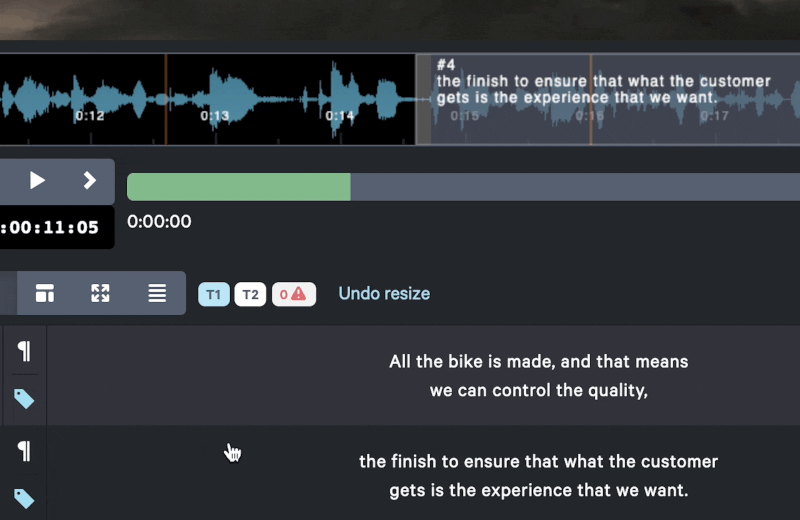Did you know that CaptionHub supports two caption tracks? Or why two caption tracks would be used? Here are 4 use cases for multiple caption tracks and how to make the most of this useful feature.
Multiple speakers
Each business will likely have its own guide and style for handling multiple speakers. The BBC, for instance, utilises colour as its primary method for signifying multiple speakers, though additional devices such as dashes or horizontal positioning were previously used.
Utilising caption track 2 is another method for handling multiple speakers, particularly if it makes sense to move what the second speaker is saying to a different position on screen.
On screen text translations
Localising what is being said is often not enough; there may be critical information in text form on screen that also requires translation. This may require a linguist to manually scan the content for text and add it to the captions, but CaptionHub can automatically identify on screen text, parse this into the second track of captions, and submit it for translation via AI or TMS platforms. This dramatically speeds up workflows, with translation of both the main subtitle track and the on-screen text in track 2 occurring at the same time and as part of the same process.
Audio descriptions
There is a great deal of context conveyed through audio - doors slamming, tyres screeching, alarms sounding, romantic music playing, etc - that can be missed if not accurately captioned. Rather than mixing these audio descriptions into the main caption track, by utilising the second track of captions, producers can clearly signify what is occurring on screen without drawing attention away.
With CaptionHub, as these captions exist in the second track, producers are able to position the text on screen independently of the main caption track and where it makes the most sense - for instance, hovering over the bike in the example below.

Multiple languages A large range of countries have multiple official languages, ranging from those with two - Wales (English/Welsh) and Canada (English/French) for example - right the way through to South Africa (11 official languages), India (22 official languages) and Bolivia with a hefty 37 official languages. It can often be desirable to have multiple languages on screen at the same time, particularly if you are attempting to learn another language; use English in the first track of captions, Welsh in the second track, and it’s a breeze to brush up on your Welsh. Gwych!
To learn more about smart features available in CaptionHub such as track 2, get in touch today.